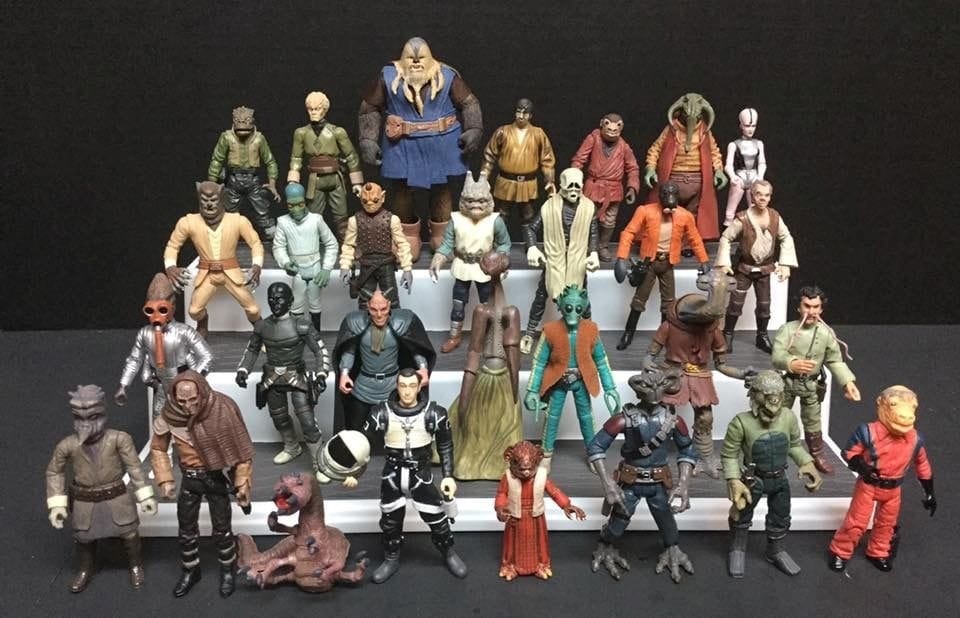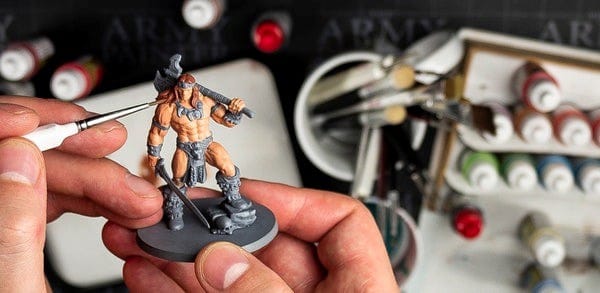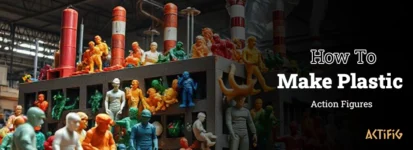No products in the cart.
Action figures have long captured the imagination, bridging the gap between pop culture enthusiasts, avid collectors, and children alike. But have you ever wondered about the detailed artistry involved in action figure creation process? Behind every character you hold in your hands lies an intricate, step-by-step process combining cutting-edge technology with skilled craftsmanship. From initial sketches to precise sculpting and painting, the production of these miniature heroes is meticulous, ensuring every figure resonates authenticity and appeal. Whether you’re an aspiring creator, collector, or simply curious, understanding the process of making action figures offers a deeper appreciation of these beloved collectibles.
| Step | Stage | Description |
|---|---|---|
| 1 | Concept Development & Design | Initial sketches and digital models are created, inspired by characters or original ideas. Artists and engineers collaborate using tools like ZBrush or Blender. |
| 2 | Sculpting & Prototyping | Digital sculpting or traditional clay modeling leads to 3D-printed prototypes, allowing for physical testing and refinement. |
| 3 | Mold Creation | Durable molds are crafted from the prototype using silicone or metal, ensuring precise detail replication for mass production. |
| 4 | Casting & Assembly | Plastic is injected into molds, cooled, and assembled into figures with attention to articulation and structural stability. |
| 5 | Painting & Finishing | Airbrushing, hand-painting, and decals add lifelike detail. Protective coatings ensure durability and enhance visual appeal. |
| 6 | Packaging & Distribution | Figures are packaged in branded, protective boxes and distributed through retail or online channels, ready for consumers. |
Step 1: Concept Development and Design
The first crucial stage in action figure -creation process begins with concept development and detailed design planning. This step is about bringing an idea or popular character to life through meticulous sketches and digital artwork. Designers often start by analyzing market trends, drawing inspiration from movies, comics, games, or even original concepts to create appealing figures. Initial rough sketches evolve into precise digital renderings using specialized software such as ZBrush or Blender, allowing creators to capture intricate details, from facial expressions to signature costumes and accessories. Collaboration is key, with character artists, sculptors, and engineers working closely to ensure that the design is both visually striking and structurally feasible. This phase lays the foundation, as every subsequent stage depends on accurate and thoughtful planning. Whether targeting collectors or general consumers, carefully executed concept development ensures that the final action figure resonates deeply with its intended audience.


Step 2: Sculpting and Prototyping
After finalizing the initial designs, the action figure creation process moves into the hands-on phase: sculpting and prototyping. Traditionally, skilled sculptors used wax or clay to shape detailed models by hand, carefully refining features like facial expressions, muscle definition, and clothing textures. Today, digital sculpting has taken center stage, with artists utilizing advanced 3D modeling software such as ZBrush to craft precise and intricate digital sculptures. Once completed, these digital models are transformed into tangible prototypes through technologies like 3D printing, commonly employing high-resolution resin printers.
Prototyping is essential—it allows designers to physically examine and refine the figure, ensuring accurate scale, stability, and articulation. At this stage, action figures manufacturing process often identify and correct subtle imperfections that digital action figure design process alone can’t reveal. Ultimately, meticulous sculpting and prototyping guarantee that the final action figures meet collectors’ expectations in detail, quality, and authenticity.
10 Top WWE Action Figures to Collect in 2025
Read articleStep 3: Mold Creation
The next critical step in action figure creation process is mold creation, a meticulous process transforming prototypes into mass-producible figures. After finalizing the prototype, manufacturers construct precise molds, typically crafted from durable materials like silicone rubber or metal alloys such as aluminum. Silicone molds are preferred for limited runs or detailed resin casts, while metal injection molds suit high-volume plastic production. Mold makers carefully segment these molds into parts, ensuring that every intricate detail—from character expressions to individual accessories—is faithfully replicated. Precision is paramount; even minor inaccuracies can distort or blur essential details, diminishing product appeal and value. Manufacturers also incorporate articulated joint cavities within molds, enabling functional, poseable limbs. Thorough testing occurs at this stage, refining molds until perfection is achieved. Ultimately, careful mold creation sets the foundation for consistent quality, ensuring every produced action figure maintains the integrity of the original design.
Step 4: Casting and Assembly
Once molds are ready, making action figures progresses to casting and assembly. This crucial phase involves injecting molten plastics—commonly PVC or ABS—into the molds under high pressure, ensuring each figure precisely captures the original action figure design process details. After cooling, the molded parts are carefully removed and inspected for quality. Assembly follows, where skilled workers join various components such as limbs, torsos, heads, and accessories using specialized techniques like ultrasonic welding or snap-fit joints. Ensuring seamless articulation is essential, as collectors value figures that can be realistically posed. Rigorous quality control during assembly ensures consistency, functionality, and durability, guaranteeing each completed action figure aligns with high-quality standards and resonates strongly with its intended audience.


Step 5: Painting and Finishing
The painting and finishing stage is crucial when making action figures, as it breathes life into each character, highlighting unique features and personality traits. Skilled artisans employ precise methods, such as airbrushing and meticulous hand-painting, to achieve accurate colors and authentic detailing—from expressive eyes and realistic skin tones to battle-worn armor and clothing textures. Manufacturers often use durable acrylic paints, ensuring vibrant, long-lasting colors. Additionally, specialized digital printing techniques can replicate intricate patterns or decals for logos and emblems. Protective coatings, ranging from matte finishes for realism to glossy effects for metallic or reflective surfaces, complete the process. Ultimately, careful painting and finishing define the figure’s visual appeal, significantly enhancing its collectible value and authenticity.
Selecting styles for action figure boxes
Read articleStep 6: Packaging and Distribution
Packaging and distribution represent the final, essential stage in action figure creation process, directly influencing consumer appeal and market success. Thoughtfully designed action figure packaging not only protects the figure but also elevates its visual presentation, enticing collectors and casual buyers alike. Manufacturers typically choose durable materials such as blister packs or collector-friendly window boxes, often incorporating vibrant graphics, clear branding, and engaging character information. Sustainable packaging practices, such as recyclable or biodegradable materials, are increasingly prioritized to appeal to eco-conscious consumers. Once securely packaged, figures move into the distribution phase, reaching retail shelves, specialty stores, or direct-to-consumer online channels. Efficient logistics ensure timely delivery, making these collectible treasures accessible worldwide and fueling ongoing enthusiasm among collectors and fans.
What are the action figures and dolls differences?
Read articleChallenges and Common Mistakes
While making action figures is an exciting and rewarding process, it comes with unique challenges. One frequent pitfall involves overlooking intricate details during prototyping, leading to inaccuracies that disappoint collectors. Mistakes in mold creation can cause production delays or compromised quality, such as joint misalignment or loss of detail. Additionally, improper choice of materials during casting or painting may result in durability issues like paint chipping or fragile components. Careful quality control at every stage is essential. Addressing these challenges through meticulous planning, rigorous prototyping, and regular testing ensures manufacturers deliver action figures that consistently meet collectors’ high standards and expectations.
How to make action figures with paper?
Making action figures out of paper is a fun and creative project anyone can try! Start by sketching your character on a piece of thick paper or cardstock—draw separate parts like the head, body, arms, and legs. Cut them out carefully with scissors, then color and decorate each piece however you like using markers, crayons, or stickers. Use small paper tabs or glue to attach the parts together, making sure the joints can move if you want some flexibility. You can even reinforce the figure with tape or add folded paper stands to help it stand up. It’s a great DIY craft that brings your imagination to life.
Conclusion
Understanding the detailed journey behind making action figures reveals the exceptional artistry, craftsmanship, and technical skill required to produce these beloved collectibles. From initial concept development to final packaging and distribution, each stage is critical in shaping figures that captivate collectors and fans worldwide. Whether you’re a passionate hobbyist, a dedicated collector, or an aspiring action figure creator, appreciating this meticulous process helps you recognize the value and complexity hidden behind every piece. By prioritizing detail, quality control, and continuous refinement, manufacturers ensure that every action figure embodies the authenticity, durability, and visual appeal that transforms these miniature heroes into treasured collectibles.
Call the actifig for best consultant.
For more information to buy products- read Bellow post.
Top 10 Must-Have Collectibles Action Figures
Read article



There are no comments yet.